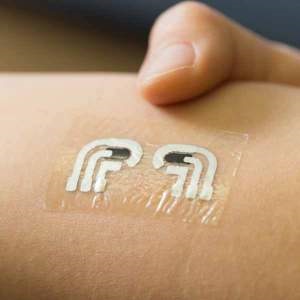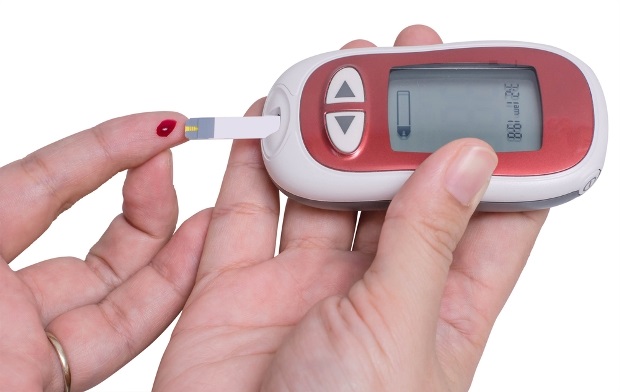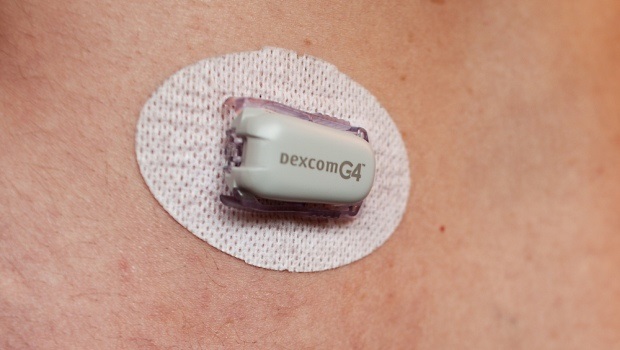
Scientists have developed a new temporary tattoo capable of extracting and measuring blood glucose levels– a discovery that may make diabetes management less painful and more convenient than ever.
This new tattoo is actually a sensor that has been developed and tested by graduate student, Amay Bandodkar and colleagues from the Nanoengineering Department at the University of California San Diego, in the United States. While the tattoo performed well in testing, the team are working to make it last longer whilst keeping the cost down. Currently the tattoo costs only a few U.S cents to make but only works for one day.
This fancy little tattoo could make the world of difference to diabetics across the globe. All diabetics, whether they have type 1, type 2 or gestational diabetes need to monitor their blood glucose levels with the aim of keeping as close to normal levels as possible. Currently, there are two mainstream techniques of testing blood glucose. Both methods have drawbacks that the tattoo option improves upon.
Read: Technology lightens the burden of diabetes
1. Glucometers
Most diabetics use a glucometer, a little device that measures blood glucose levels from a sample of blood placed onto a test strip inserted into the meter. The machine then displays the result and also keeps it recorded for future reference.
Glucometers are popular as they are relatively inexpensive and well covered, if not entirely covered by most medical aids.
However, to extract the blood sample needed, the person must prick his or her finger using a lancet. Whilst this finger prick doesn’t hurt most adults, babies and young children can find this relatively painful.
Some diabetics are scared of pricking their finger and can avoid testing their levels because of it. The long-term complications of poorly-managed blood glucose can seriously compromise other organs and bodily functions.
Using a glucometer to measure the glucose levels in a sample of blood (Courtesy of Shutterstock)
Read: Google lenses could replace finger-pricks for diabetics
2. Continuous Glucose Monitors
Another method used to measure blood glucose is by using a continuous glucose monitor (CGM). The purpose of a CGM is to provide near-constant feedback, allowing for more consistent and stable glucose levels. The device works by having a sensor applied under the skin, an article by the University of Kansa Medical Centre explains. The sensor, a glucose oxidase platinum electrode, generates an electrical current in the presence of glucose. The sensor is connected to a device that measures the current and displays a blood glucose result every five minutes. Some of the devices can alert the user when levels are increasing or dropping.
While CGM’s may provide more consistent readings, the sensors can be quite expensive and aren’t as well covered by medical aid as the glucometer and test strips are. The sensors (sites) can also be painful to apply and there is the added inconvenience of having to wear a device on your person for the sensor to transmit the results.
An example of a CGM sensor on the skin (Courtesy of Alden Chadwick on Flickr, copyright 2012)
Read: New sensors may spell the end of finger-pricks for diabetics
Technology behind the tattoo
The actual tattoo is made up of woven electrodes, printed onto the rub-on tattoo, RT explains. It measures glucose in the intercellular fluid in the skin rather than blood. The electrodes work in a similar way to the CGM’s sensor, by measuring an electrical charge triggered by the glucose.
The tattoo does not display the result. Instead, the team are currently developing a method of reading the device that could be integrated with Bluetooth. This would allow the data to be transmitted to the user’s phone or other gadgets for continuous management.
If the developers are successful in keeping the costs of the tattoo low, it will most certainly rival both the glucometer and the CGM. It could potentially provide the technology and better management of the CGM without the painful site insertion or high cost – an exciting development for the millions of people suffering from diabetes worldwide.
Read more:
What is diabetes?




 Publications
Publications
 Partners
Partners















